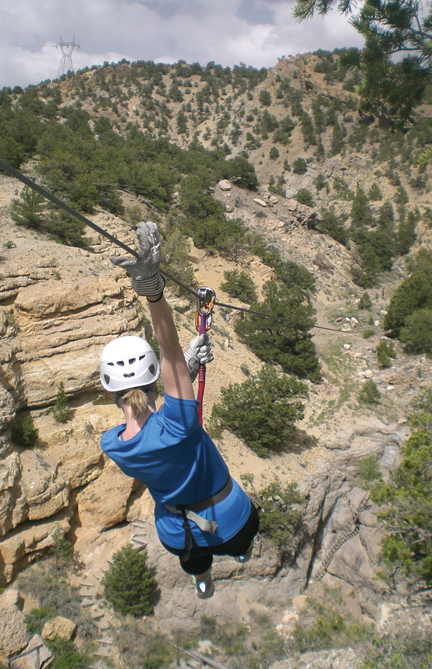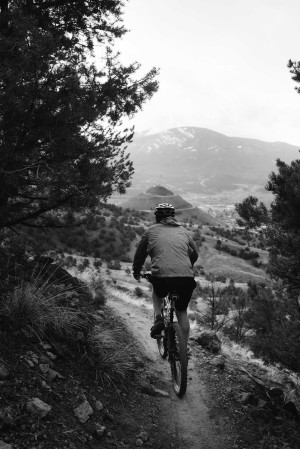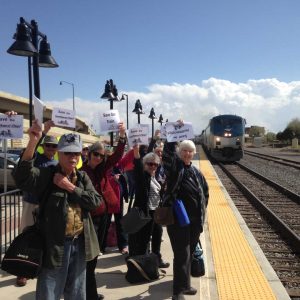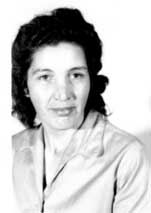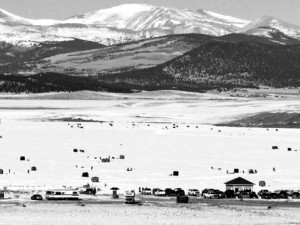When Salidan Monty Holmes purchased nearly 30 acres of arid canyon land near Wellsville, Colorado in 2000, his original dream of building cabins on the property transformed into something much bigger and much bolder.
Lacking access to electricity for the properties, he decided on another strategy, to “make lemonade outta lemons,” and did what any savvy entrepreneur might do in the 21st century – he went to Google. Typing in “zip line in USA,” he was startled to find fewer than 200 results. Those sparse outcomes led to a research and development trip to Costa Rica where, since the 1970s, ziplining has been one of that country’s most popular recreational activities.
In 2004 and into 2005, Holmes built and opened the first zipline in Colorado, dubbed Captain Zipline’s Lost Canyon, sending adventuresome tourists zipping across canyon rims 150-200 feet above the rocky canyon floor, suspended on cables via a harness and a special pulley. At the Lost Canyon, there are six zip cable routes, varying from 200-700 feet in length, as well as an 80-foot practice cable. Zipline “trainees” are first given instruction on the harness and pulley mechanism before tackling the “bunny zip.” They then hike along trails above the canyon to various take-off platforms. Zipliners can travel up to 40 mph on the 695-foot “Leap of Faith,” the sixth in the series of seven cables.
Other recreational businesses across the state soon followed suit, creating ziplines of their own. Holmes, who refers to himself as Captain Zipline, decided to amp up his park even more and added a series of via ferratas (Italian for “iron roads”), protected climbing routes along cliff faces via steel cables which are affixed to the rock wall. The cable allows climbers to secure themselves to the rock face, limiting any chance of injury from a fall. Lost Canyon has four via ferrata routes, built between 2012 and 2014: the Mountain Goat, Diamondback, Victory Ridge and Fortress, configured into two different tour routes.

But Holmes wasn’t going to rest on his laurels, and in 2014, introduced an aerial adventure park, again the first of its kind in the state, and based on similar challenge courses found in Europe. Initially considered to be built on the mesa tops above the canyon, he thought “Wow, wouldn’t it be even better and more dramatic if we built this down in the canyon?”
And thus, another “first” was born.
The Canyon Aerial Course (CAC) complex consists of interconnected “elements” such as swinging bridges and logs, cargo nets, balance beams, catwalks, trapezes and tunnels, all built between thirty 60-foot, class-two, treated poles. Imported from Georgia, these poles weigh over 3,000 pounds each and required a 100-ton crane for installation, and are set eight feet deep. A series of small platforms are attached at multiple levels on the poles, connecting one course to the next.
Also known as “forest parks,” the European courses are usually set among trees, but the Wellsville course allows all the elements to be seen at once against the backdrop of the rugged canyon. Holmes calls it “Indiana Jones meets Spiderman in a gorgeous canyon.”
[InContentAdTwo]
The CAC was designed and installed by world-renowned Altitude Montage from Switzerland, specialists in aerial park design. It features nine courses, or “trails,” with 10-15 elements (bridges), each one rated similarly to ski runs: yellow represents the easiest three runs; two green runs, which are slightly more challenging; two blue runs, which require some core strength and strategy; one black (difficult) run; and a double black “commando course” for experts. A “smart belay” system keeps the participant clipped to the safety cable at all times and instruction is provided by trained guides, along with gear and a safety briefing. The CAC tour is self-guided, and most participants take about two hours to complete a series of runs. A safety lifeline is installed the entire length of the courses. The courses, says Holmes, help build stamina and confidence, while having fun in the outdoors.
Holmes says his is the largest aerial park in the Western U.S. and is visited by thousands of visitors annually, including many Europeans eager to try out an American aerial park. Thrill-seeking visitors must be ages 8 and up with a minimum weight of 70 and a maximum of 250 pounds with a vertical reach of 60 inches, flat-footed. Captain Zipline recommends that visitors are reasonably fit and in good health. Summertime is the busiest season at the park, but it is open year-round with advance notice.
“What’s next?” we asked Holmes, whose passion for his park is as deep as his canyon.
“We are lighting up the park in June for nighttime adventure activities. I think it will be the only after-dark adventure in the state, except maybe for nighttime skiing.”
So now that he’s getting electricity to the place, maybe he can build those cabins he’d hoped to do 15 years ago.
For reservations, directions and rates, visit captainzipline.com

